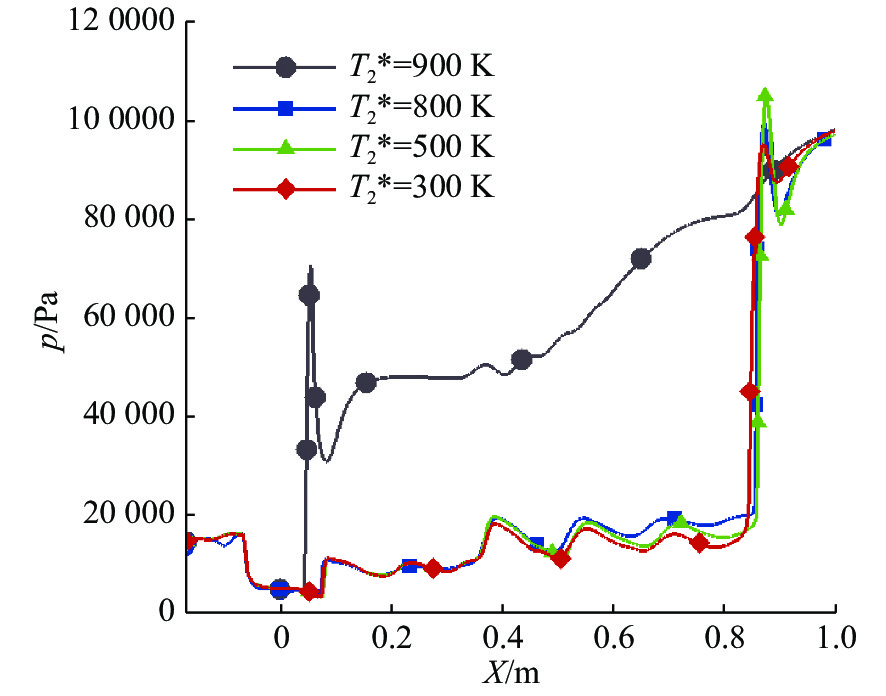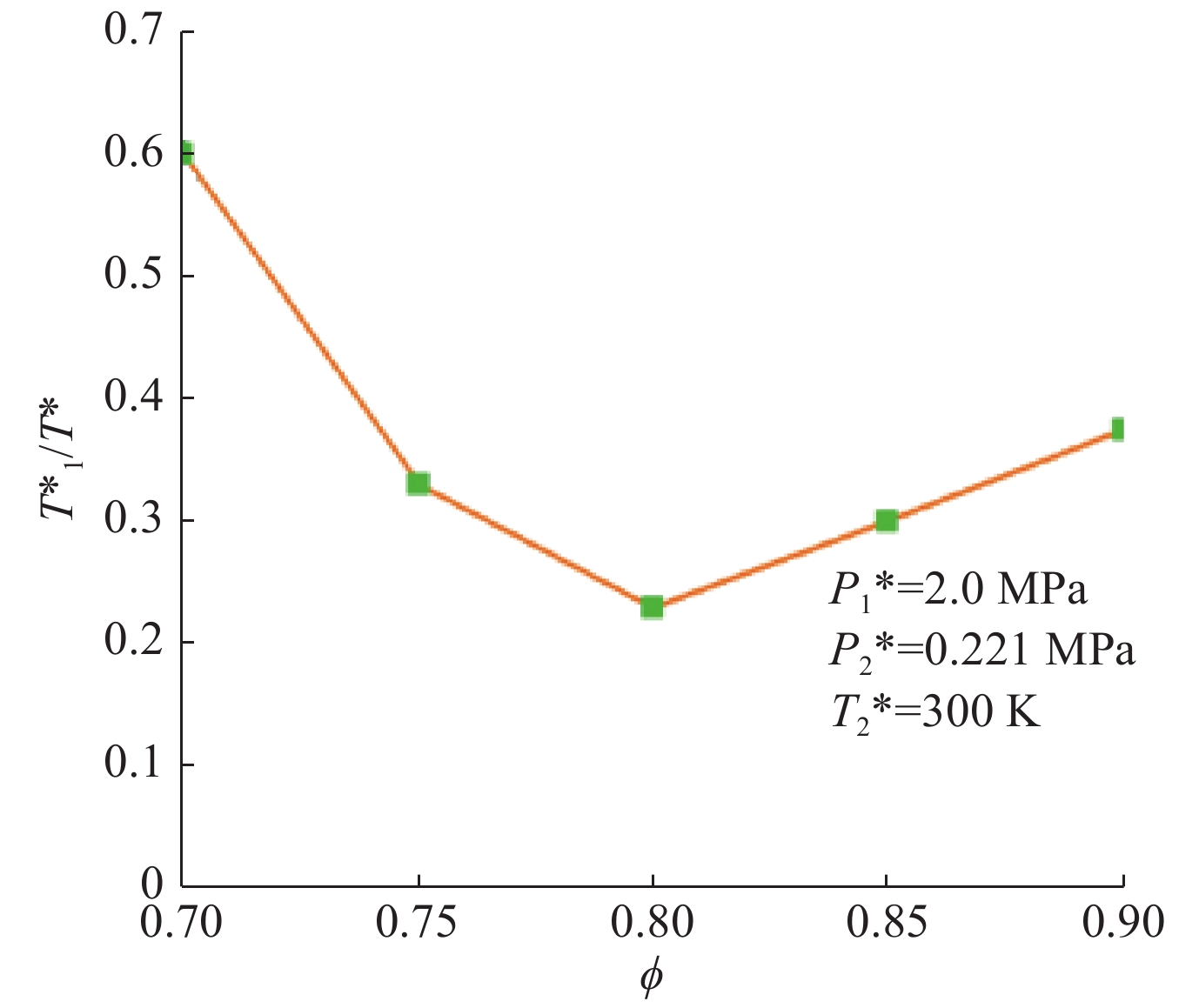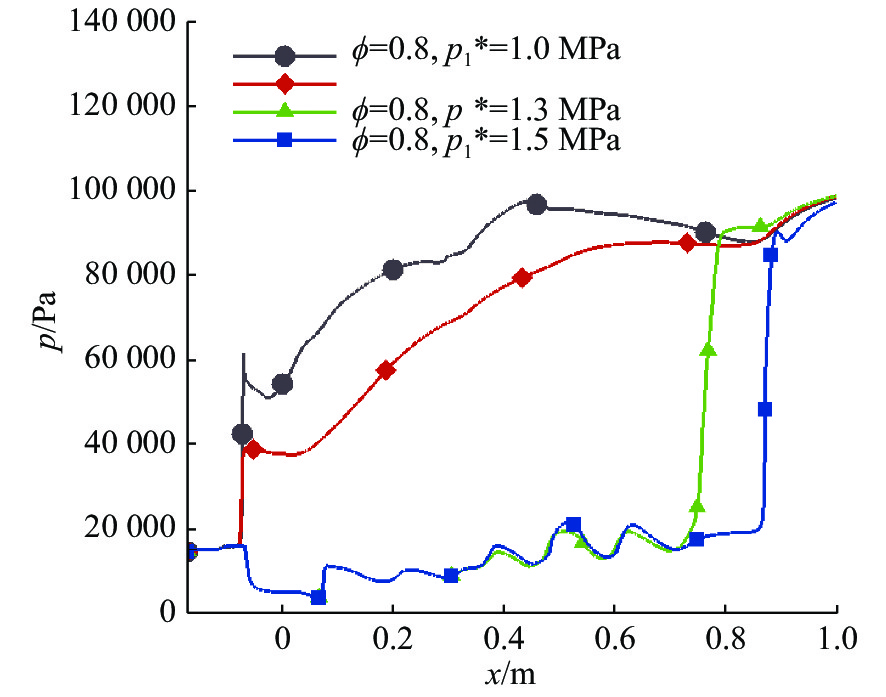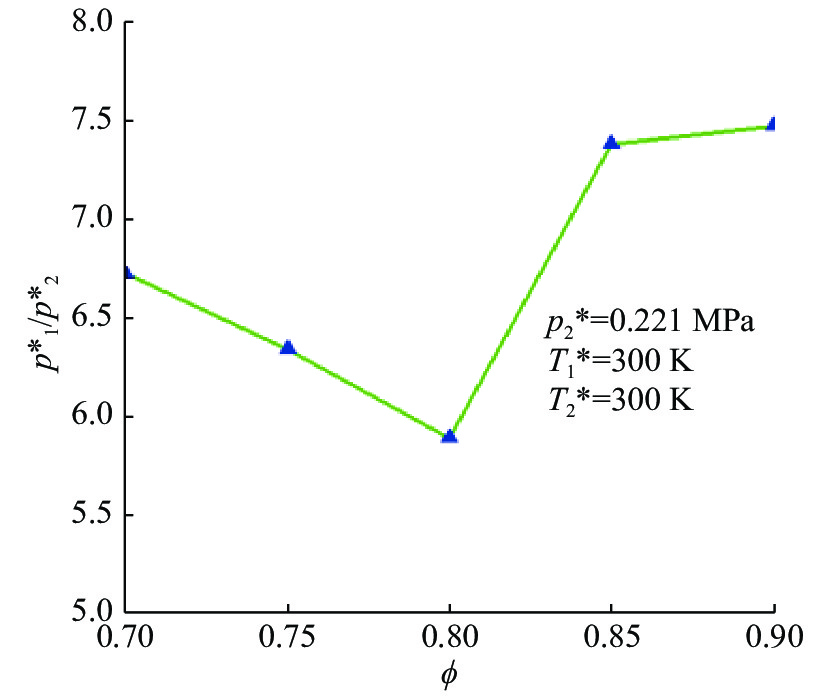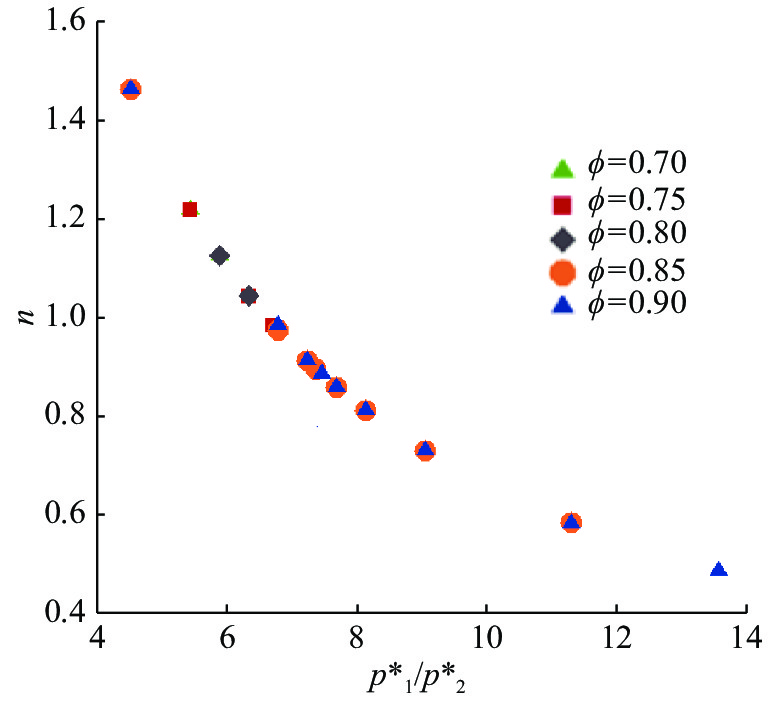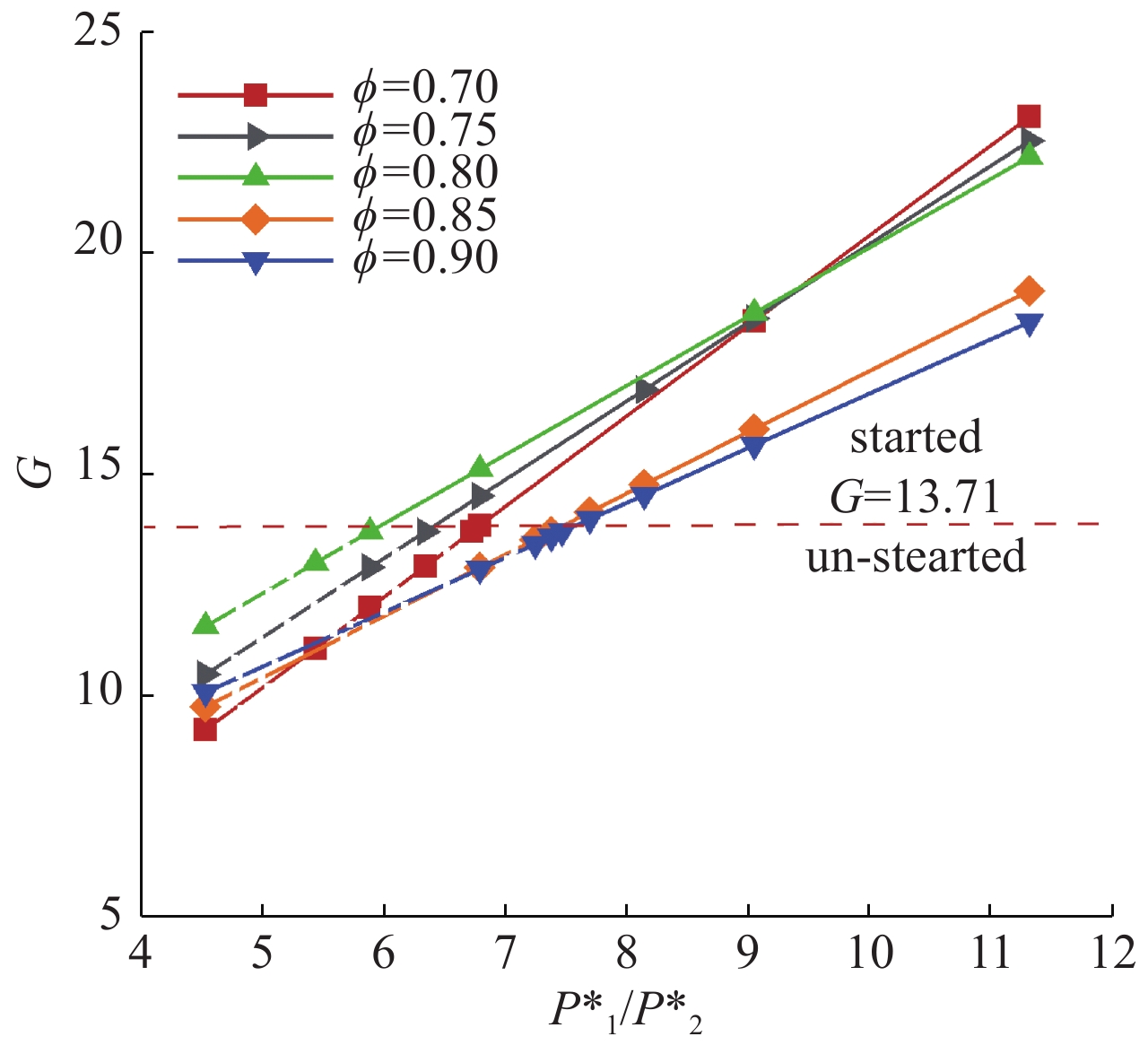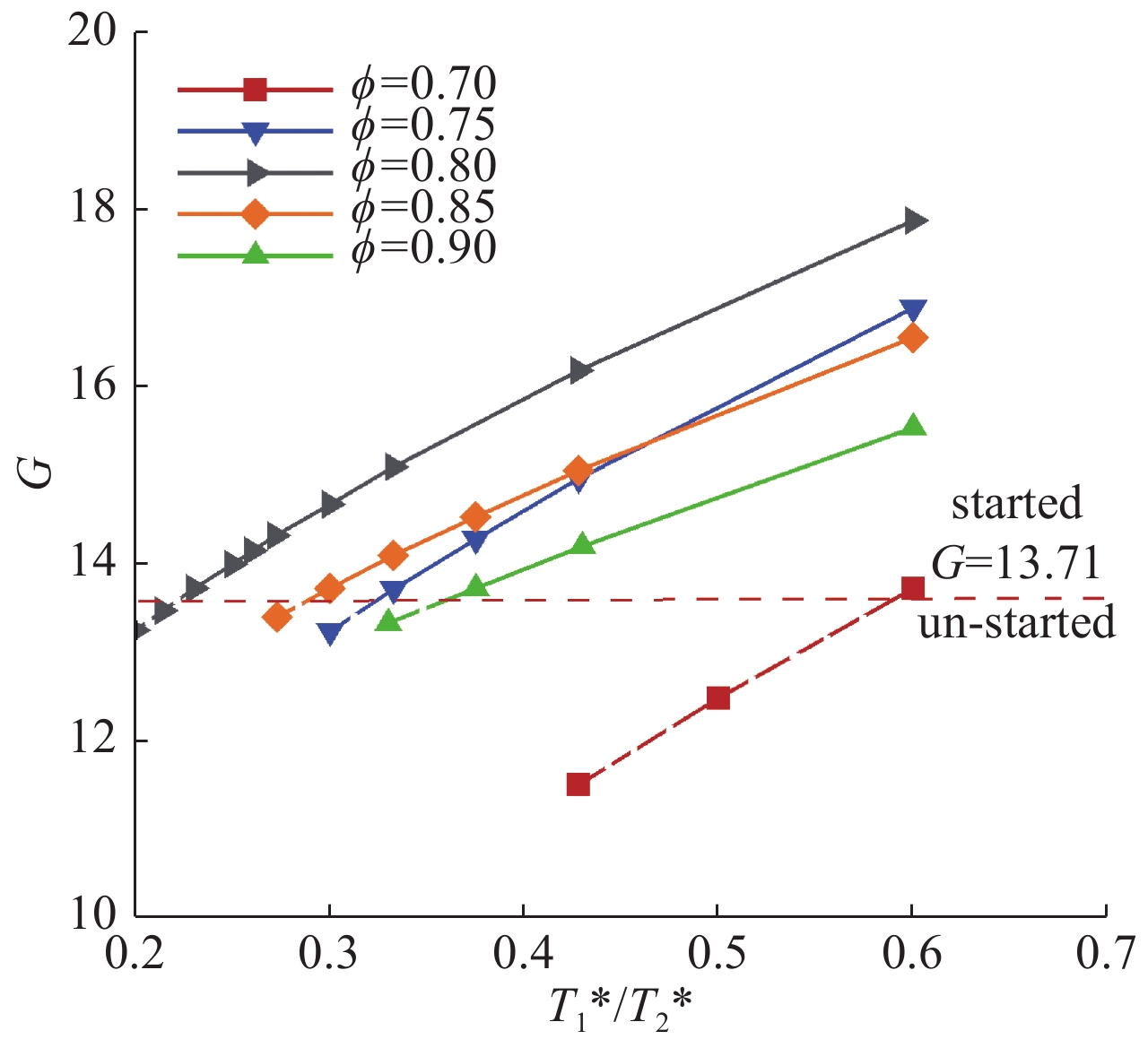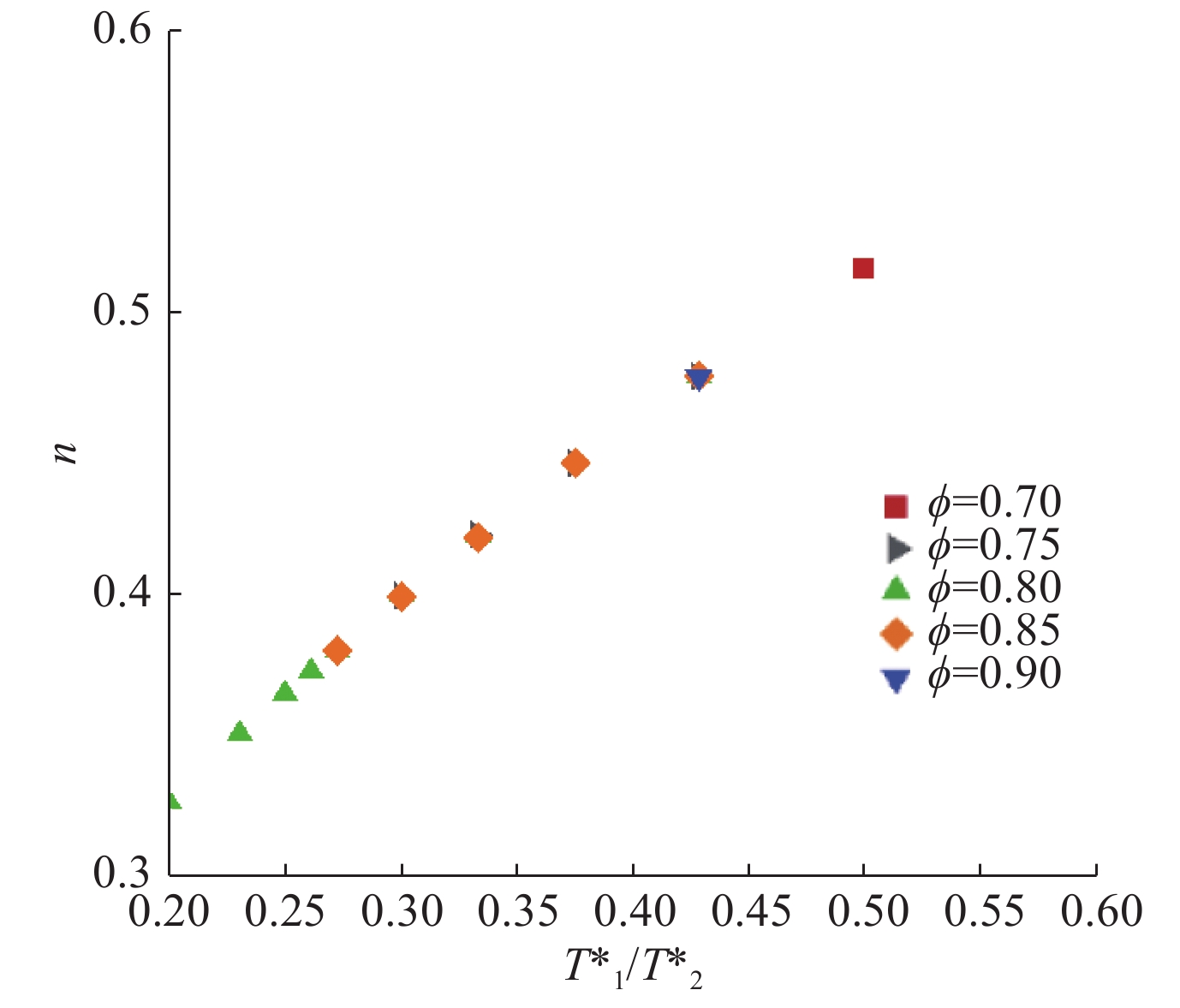Starting characteristics of variable section supersonic-supersonic ejector
-
摘要: 为研究不同结构参数与来流参数下变截面超-超引射器的启动特性,用于指导超-超引射器设计与工况调试,采用二维雷诺平均Naiver-Stokes方程,数值研究了引射器混合室不同收缩比、一次流和二次流的不同总压比、总温比下超-超引射器的启动规律,并定义了“启动系数”来判别超-超引射流场是否建立。研究结果表明:随着收缩比(范围0.7~0.9)的增加,超-超引射器启动的临界总压比、总温比均先降低后升高,收缩比0.8时,存在最佳总压比5.88,最佳总温比0.21。结构参数一定,超-超引射器随总温比升高启动难度增加。当超-超引射器处于启动状态下,室压不随总温比、总压比变化而变化,引入的启动系数较引射系数可不依赖具体工况而直接判别超-超引射器是否启动。Abstract: To study the starting characteristics of the variable cross-section supersonic-supersonic ejector with different structural and flow parameters, the two-dimensional Reynolds averaged Naiver-Stokes equations were employed to examine the different total pressure and total temperature ratios of primary and secondary flows in the mixing chamber of the ejector. The “start-up coefficient” was defined to test whether the supersonic-supersonic field was established. The results show that the critical total pressure ratio and total temperature ratio of ejector start-up first decreased and then increase with the increase of the contraction ratio (range 0.7−0.9). When the contraction ratio is 0.8, the optimal total pressure ratio is 5.88 and optimal total temperature ratio is 0.21. With fixed structural parameters, it is more difficult to start the supersonic-supersonic ejector when the total temperature ratio is higher. In the starting state of the supersonic-supersonic ejector, the chamber pressure is constant as the total temperature ratio and total pressure ratio vary. Also, compared with the ejector coefficient, the defined start-up coefficient can directly determine whether the supersonic-supersonic ejector has started or not, regardless of the specific working conditions.
-
表 1 超超引射器结构参数
Table 1. Structural parameters of supersonic-supersonic ejector
H0/mm H1/H0 H2/H0 H4/H0 L1/H0 L2/H0 α/(°) β/(°) 32 0.3 2.9 1.8 14.1 10.9 3 7 表 2 不同收缩比下超-超引射器结构参数
Table 2. Structure of supersonic-supersonic ejector parameters with different contraction ratios
$ \phi $ H3/H0 L2/H3 H5/H0 0.70 2.23 6 3.48 0.75 1.86 3.72 0.80 1.99 3.97 0.85 2.11 4.22 0.90 2.23 4.47 -
[1] 陈健. 超-超引射器内部流动过程研究[D]. 长沙: 国防科学技术大学, 2012.Chen Jian. Researches on the flow process of the supersonic-supersonic ejector[D]. Changsha: Graduate School of National University of Defense Technology, 2012 [2] Zimet E. Steady state and transient operation of an ejector for a chemical laser cold flow mixing experiment[R]. Naval Surface Weapon Center/WOL/TR 76-142, 1976. [3] Batt R G, Behrens H W. Chemical laser advanced diffuser ejector (CLADE) program alternate V—Far advanced technology concepts[R]. DRCPM-HEL-VR-79-1, 1978. [4] Singhal G, Mainuddina, Tyagia R K, et al. Pressure recovery studies on a supersonic COIL with central ejector configuration[J]. Optics & Laser Technology, 2010, 42(7): 1145-1153. [5] Gaurav S, Rajesh R, Mainuddin, et al. Two-stage ejector based pressure recovery system or small scale coil[C]//36th AIAA Plasma dynamics and Laser Conference. 2005. [6] Etele J, Sisilian J P, Parent B. Variable area ejectors for increasing the compression factor of an RBCC engine[C]//40th AIAA/ASME/SAE/ASEE Joint Propulsion Conference and Exhibit. 2004. [7] Foelsche R O, Tsai C Y, Bakos R J. Experiments on a RBCC ejector scramjet with integrated, staged secondary-fuel injection[R]. AIAA 99-2242, 1999. [8] 刘盛田, 邱雄飞, 李金雪, 等. 二维超-超引射器混合室流场特性[J]. 强激光与粒子束, 2014, 26:101007. (Liu Shengtian, Qiu Xiongfei, Li Jinxue, et al. Flow structure of 2-D supersonic-supersonic ejector mixing chamber[J]. High Power Laser and Particle Beams, 2014, 26: 101007 doi: 10.11884/HPLPB201426.101007 [9] 王宗浩, 邹建军, 黄洁. 两级超声速引射器流动机理研究[J]. 推进技术, 2013, 34(10):1304-1309. (Wang Zonghao, Zhou Jianjun, Huang Jie. Supersonic to supersonic ejection mechanism of a two-stage ejector[J]. Journal of Propulsion Technology, 2013, 34(10): 1304-1309 [10] Dutton J C, Addy A L. One-dimensional analysis of supersonic-supersonic ejector-diffuser systems for chemical laser applications[R]. UILU-ENG-78-4015, 1978. [11] Mikkelsen C D, Sandberg M R, Addy A L. Theoretical and experimental analysis of the constant-area, supersonic-supersonic ejector[R]. UILU-ENG-76-4003, 1976. [12] Dutton J C, Mikkelsen C D, Addy A L. A theoretical and experimental investigation of the constant area, supersonic-supersonic ejector[J]. AIAA Journal, 1982, 20(10): 1392-1400. [13] 吕辉强. 二维超声速空气引射器理论与实验研究[D]. 国防科学技术大学, 2008.Lü Huiqiang. Theory and experimental investigation of two-dimensional supersonic air ejector[D]. Changsha: Graduate School of National University of Defense Technology, 2008 [14] 陈钦, 陈吉明, 蔡光明, 等. 超-超引射器多目标优化设计[J]. 强激光与粒子束, 2012, 24(5):1043-1046. (Chen Qin, Chen Jiming, Cai Guangming, et al. Multi-objective optimization of supersonic-supersonic ejector[J]. High Power Laser and Particle Beams, 2012, 24(5): 1043-1046 doi: 10.3788/HPLPB20122405.1043 [15] 张鲲鹏, 薛飞, 潘卫明, 等. 高压气体引射器的试验研究和仿真[J]. 热科学与技术, 2004, 2(3):133-138. (Zhang Kunpeng, Xue Fei, Pan Weiming, et al. Experimental investigation and numerical simulation of high-pressure gas ejector[J]. Journal of Thermal Science and Technology, 2004, 2(3): 133-138 -





 下载:
下载:



